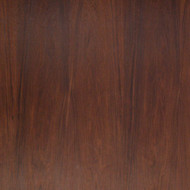Most unique wood veneer colors
Jul 17th 2025
Wood veneers offer a vast array of unique and striking colors, influenced by the species, grain patterns, and sometimes dyeing or finishing processes. Below is a list of some of the most unique and naturally colorful veneers, along with a few modified or dyed options for special applications:
Naturally Unique Veneer Colors
- Purpleheart (Peltogyne):
- Color: Rich purples that deepen over time into a darker violet-brown.
- Unique Trait: The natural purple hue makes it one of the rarest naturally colored woods.
- Ziricote (Cordia dodecandra):
- Color: Deep brown with striking black streaks and unique "landscape-like" grain patterns.
- Unique Trait: Its dramatic grain resembles natural art.
- Amboyna Burl (Pterocarpus indicus):
- Color: Golden-yellow to deep reddish-brown with a high natural luster.
- Unique Trait: Dense burl patterns with rich tones.
- Pink Ivory (Berchemia zeyheri):
- Color: Vibrant pink to reddish-pink.
- Unique Trait: Rare and associated with royalty in African cultures.
- Buckeye Burl (Aesculus californica):
- Color: Blue-gray to creamy yellow, often with dark brown or black streaks.
- Unique Trait: The unpredictable, swirling grain creates an abstract appearance.
- Redwood Burl (Sequoia sempervirens):
- Color: Deep reddish-brown to orange-red with intense figuring.
- Unique Trait: Warm, rich tones with complex grain.
- Camphor Burl (Cinnamomum camphora):
- Color: Golden brown with hints of red, orange, and dark streaks.
- Unique Trait: A strong, spicy fragrance accompanies its stunning grain.
- Bubinga (Guibourtia spp.):
- Color: Ranges from pinkish-red to deep red with subtle violet streaks.
- Unique Trait: Often highly figured with waterfall or pommele patterns.
- Karelian Birch Burl (Betula pendula var. carelica):
- Color: Creamy white with gray and light brown figuring.
- Unique Trait: Marbled, elegant grain with subtle tonal variations.
- Macassar Ebony (Diospyros celebica):
- Color: Dark brown to black stripes alternating with golden or reddish-brown.
- Unique Trait: High contrast and striking patterns.
Dyed or Modified Veneers
- Anigre Dyed Veneer (Pouteria spp.):
- Color: Often dyed in bright colors like teal, blue, or pink while maintaining its subtle grain.
- Unique Trait: Popular for artistic or modern applications.
- Maple Dyed Veneer (Acer spp.):
- Color: Dyed into vibrant shades like emerald green, sapphire blue, or crimson red.
- Unique Trait: Smooth grain serves as an excellent canvas for bold colors.
- Blackened Oak Veneer (Quercus spp.):
- Color: Deep, inky black from chemical treatments or ebonizing.
- Unique Trait: Retains the oak grain pattern while offering a dramatic, modern aesthetic.
- Blue-Tinted Poplar Burl (Populus spp.):
- Color: Enhanced with shades of light to dark blue while showcasing its natural burl.
- Unique Trait: A mix of organic and bold artificial tones.
Exotic and Rare Veneer Colors
- Cocobolo (Dalbergia retusa):
- Color: Rich orange, red, and brown with dark streaks.
- Unique Trait: Extremely dense with a natural polished look.
- Lacewood (Panopsis spp.):
- Color: Light reddish-brown with shimmering, lace-like figuring.
- Unique Trait: The small flecks resemble reptilian scales.
- Snakewood (Brosimum guianense):
- Color: Reddish-brown with black, snakeskin-like patterns.
- Unique Trait: Rare and exceptionally hard.
- Padauk (Pterocarpus soyauxii):
- Color: Vivid orange to bright red that darkens over time.
- Unique Trait: Retains a glowing warmth even after aging.
- Olive Ash Burl (Fraxinus excelsior):
- Color: Light golden-brown with dark, greenish-gray streaks.
- Unique Trait: A combination of elegance and boldness in its grain.
Why These Colors Are Unique
The uniqueness of these veneers comes from their combination of natural growth patterns, environmental influences, and in some cases, enhancements through dyeing or finishing. They are chosen for high-end furniture, luxury goods, musical instruments, and artistic designs to add character, exclusivity, and sophistication.
